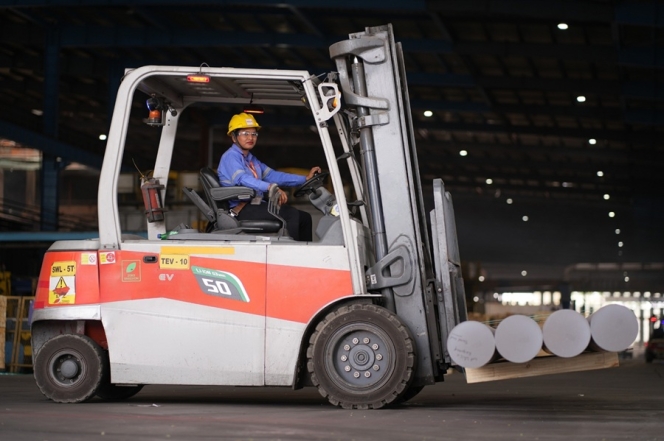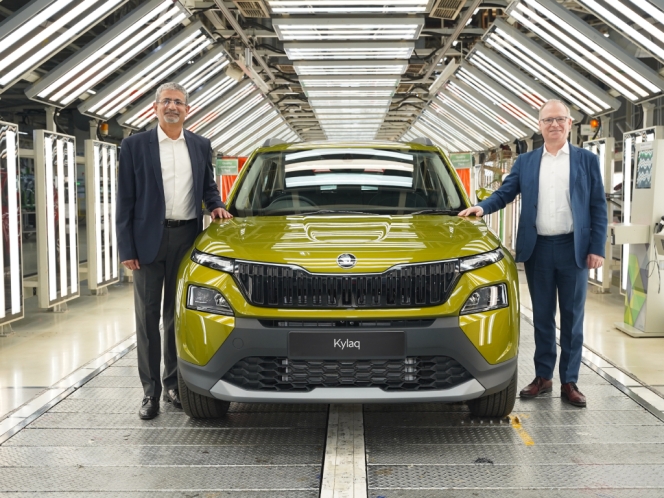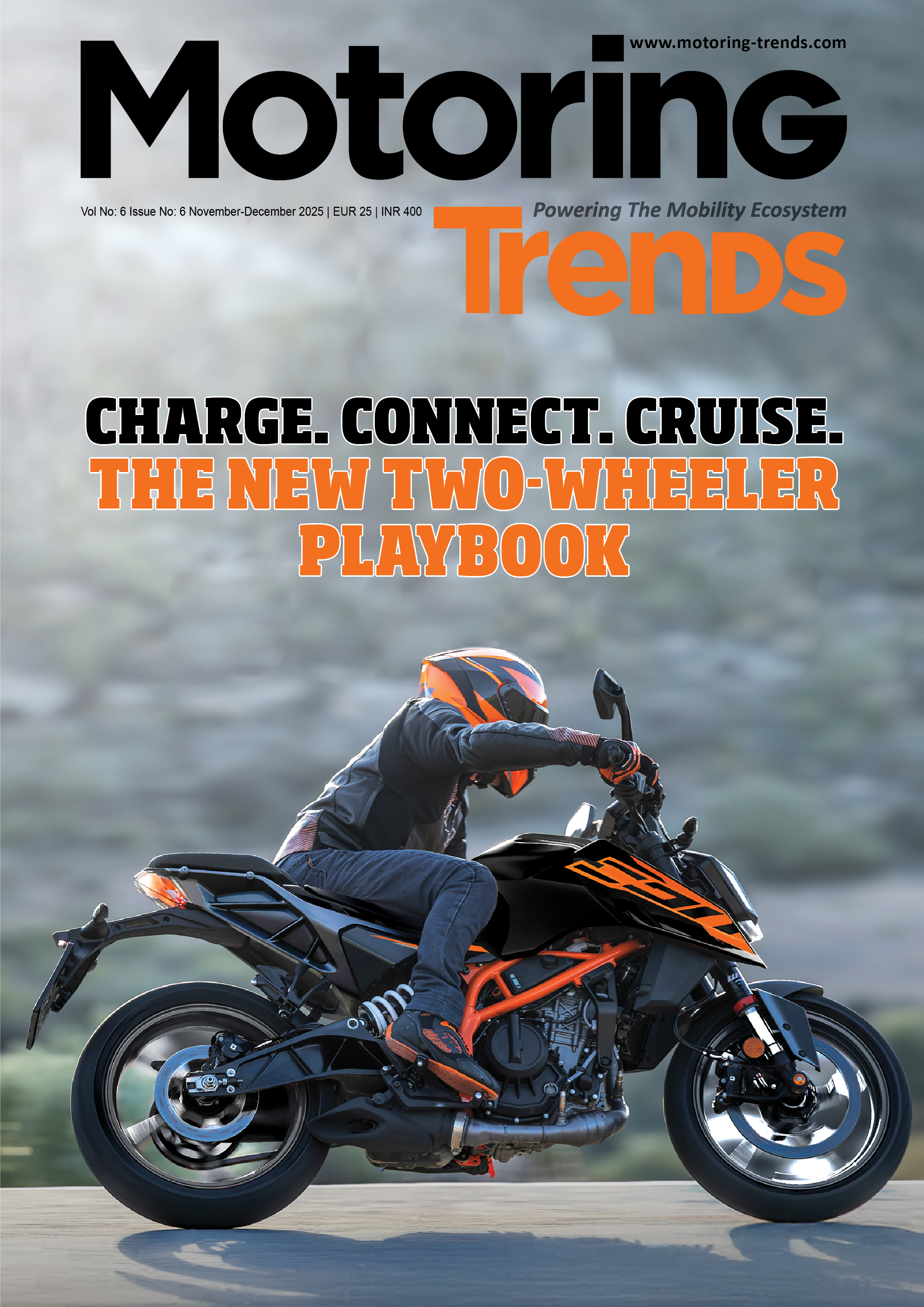Automobile Sales This Festive Season Exceed That Of The Last Festive Season
- By MT Bureau
- November 15, 2024

The 42 days festive period vehicle retail data for 2024 that the Federation Of Automobile Dealers Associations (FADA) has released, the overall sales of automobiles during this festive season have exceeded that of the last festive season.
"I am delighted to announce that the automobile retail sector has achieved a new milestone, surpassing last year's festive records. We witnessed a remarkable surge in numbers since the beginning of Navratri, nearly hitting our forecasted target with 42.88 lakh vehicles registered during this period — a growth of 11.76 percent over last year's 38.37 lakh units,” mentioned C S Vigneshwar, President, FADA.
Two-wheeler sales were particularly robust, according to him, registering a 13.79 percent growth to reach 3.31 million units, largely driven by strong rural demand.
Passenger vehicle sales bounced back after a decline of roughly two-to-three months with a growth of 7.10 percent to 0.6 million units, spurred by pent-up demand and unprecedented discounts available in the market.
Acknowledging that the target of 45,00,000-unit sales could have been fully met or even exceeded were it not for the unseasonal heavy rains in South India (especially in Bengaluru and Tamil Nadu) and the Cyclone Dana that affected Odisha, Vigneshwar averred, “FADA anticipates – as the festivities conclude – that passenger vehicle stock levels will reduce further from was reported in the October retail data press release.”
“FADA advises caution as the complete picture on inventory will emerge by month-end,” he added.
Stating that FADA urges OEMs to focus on liquidating 2024 stock so that Dealers can enter 2025 with ideal FADA-recommended 21 days of inventory, Vigneshwar said, “Its 1.5 months remaining before the calendar year ends.”
|
Category |
Festive Season 2024 |
Festive Season 2023 |
Growth Percentage |
|
Two-wheelers |
33,11,325 units |
29,10,141 units |
13.79 |
|
Three-wheelers |
1,59,960 units |
1,49,764 units |
6.81 |
|
Commercial Vehicles |
1,28,738 units |
1,27,436 units |
1.02 |
|
Passenger Vehicles |
6,03,009 units |
5,63,059 units |
7.10 |
|
Tractors |
85,216 units |
86,640 units |
- 1.64 |
|
Total |
42,88,248 units |
38,37,040 units |
11.76 |
Himadri Exports First Liquid Coal Tar Pitch Shipment To Middle East From New Mangalore Port
- By MT Bureau
- December 01, 2025

Himadri Speciality Chemical (HSCL), a leading supplier of speciality chemicals and advanced carbon materials, has announced the successful execution of its first liquid coal tar pitch export shipment to the Middle East from its terminal at the New Mangalore Port.
The consignment, totalling 3,600 tonnes of liquid coal tar pitch, was shipped from Himadri’s terminal, confirming the company’s operational capabilities and supply chain resilience in executing high-volume exports to international markets.
This shipment from the western coastline opens a second export corridor for Himadri, alongside its established terminal at Haldia on India’s eastern coast. This development further strengthens the company’s ability to cater to industrial demand across key global regions, particularly the Middle East and the Americas.
Liquid coal tar pitch is a raw material used in aluminium smelting, graphite electrode manufacturing and other high-temperature industrial applications where performance, purity and stability are crucial. The completion of this shipment highlights Himadri’s technical expertise and manufacturing capability to meet the requirements of global heavy industries.
Anurag Choudhary, Chairman & Managing Director and Chief Executive Officer of Himadri Speciality Chemical, said, "This first-ever coal tar pitch shipment from New Mangalore Port to the Middle East is a defining milestone for Himadri and underscores India’s growing presence in the global carbon materials ecosystem. It reflects our capability to deliver large-scale, high-quality exports while reaffirming our steadfast commitment to reliability, consistency and operational excellence. This reflects the confidence global markets have in our products and capabilities. As we continue to expand our international footprint, we remain firmly focused on reinforcing India’s position as a trusted and dependable supplier of advanced carbon materials."
Building on this, Himadri has articulated an expansion strategy, with the objective of becoming a leading player in the global coal tar pitch market. The company will focus its international expansion in the Middle East and the Americas, where demand for carbon materials continues to rise, driven by growth in aluminium production, infrastructure development and energy-intensive industries.
Enhanced capacity planning, strengthened export corridors, diversified port utilisation and a targeted market outreach programme will support this strategy across these regions. Himadri aims to establish itself as a long-term supplier by leveraging its integrated manufacturing capabilities, technical know-how and sustainable production practices. The company said it continues to invest in quality systems, infrastructure optimisation and supply-chain resilience to ensure consistent delivery and scalability.
- Association of Indian Forging Industry
- AIFI
- Bansal Precision Forge
- Nasscom
- BizSol Technologies
- Yeskolube India
AIFI Hosts Session On Emerging Technology In Forging Sector
- By MT Bureau
- November 28, 2025
The Association of Indian Forging Industry (AIFI), the body representing India’s forging sector, organised a Session on ‘Emerging Technology in Forging’ in Bengaluru. The session brought together industry leaders, technology experts and forging professionals to discuss how innovation, automation and digital transformation are reshaping the future of the forging ecosystem. The event aimed to spotlight opportunities that new-age technologies offer for enhancing operational efficiency, productivity, and sustainability within the sector.
The session began with remarks by Vivek Bansal, Director, Bansal Precision Forge. This was followed by a presentation by Senthil Kumar R, Nasscom Centre of Excellence – IoT & AI, on how Artificial Intelligence (AI), Internet of Things (IoT), and automation are reshaping the forging industry. He highlighted use cases and the relevance of connected manufacturing.
This was followed by a session on ‘Driving Digital Transformation in the Forging Sector’ by Dr. Amit Goyal and Dr. Manju Gupta from BizSol Technologies. Their presentation showed how ERP systems, digital integration and data intelligence are enabling forging companies to transition into the Industry 4.0 era with agility and efficiency.
Ajit Gaikwad, Yeskolube India, spoke on the ‘Importance of Forging Die Lubricant’ and its role in productivity and die life. The presentation by Ramakrishna D, Orb Energy, focused on ‘Powering Indian Enterprise with Solar,’ highlighting how renewable energy adoption is becoming an advantage.
Yash Munot, President of The Association of Indian Forging Industry (AIFI), said, “At AIFI, our priority has always been to empower the forging industry with knowledge, capability, and a clear roadmap for the future. As the sector enters a new phase driven by digital and technological advancement, it is essential that our members understand and adopt these innovations at the right pace. This session reinforces AIFI’s commitment to enabling industry-wide transformation through meaningful collaborations, continuous engagement with technology leaders, and creating platforms that help our members stay globally competitive. We remain focused on strengthening India’s forging ecosystem and ensuring it continues to play a pivotal role in the country’s industrial and economic progress”.
Vedanta Aluminium Doubles Electric Forklift Fleet To 142 Units
- By MT Bureau
- November 27, 2025

Vedanta Aluminium, India’s largest producer of aluminium, has announced the expansion of its lithium-ion battery powered electric forklift fleet to comprise 142 units. This expansion, which more than doubles the previous total, supports the company’s commitment to green logistics.
The transition to electric forklifts aligns with Vedanta’s commitment to achieving net-zero carbon emissions by 2050 and the goal of decarbonising its Light Motor Vehicle (LMV) fleet by 2030.
The 142 electric forklifts have been deployed across the company's operations in Odisha and Chhattisgarh. At its Jharsuguda smelter alone, where 116 forklifts operate, the initiative is expected to eliminate approximately 4,450 tonnes of CO2-equivalent greenhouse gas emissions annually and reduce diesel consumption by 1.63 million litres each year. The transition also enhances workplace safety and boosts operational efficiency through faster charging and lower maintenance requirements.
Rajiv Kumar, CEO - Vedanta Aluminium, said, “At Vedanta Aluminium, we view sustainability as more than a commitment, it is a catalyst for transformation. Our expanded electric forklift fleet is a testament to what becomes possible when we invest in technologies that benefit both our operations and our planet. This milestone has not only strengthened our environmental efforts but has also created new pathways for greater inclusion in industry roles that were once considered inaccessible to women.”
The initiative has created new opportunities for inclusive growth, with several forklifts operated by women and transgender professionals, reinforcing the company's commitment to equality. This includes the deployment of India's first 10-tonne capacity electric forklifts at the Jharsuguda smelter operations.
- Skoda Auto Volkswagen India
- Skoda
- Volkswagen
- Bentley
- Slavia
- Kylaq
- Kushaq
- Taigun
- Virtus
- MQB-A0-IN
- Piyush Arora
- Lamborghini
- Audi
Skoda Auto Volkswagen India Attains 2 Million Unit Production Milestone
- By MT Bureau
- November 21, 2025

Skoda Auto Volkswagen India (SAVWIPL), one of the leading passenger vehicle manufacturers, has attained a new production milestone of rolling out its 2 millionth unit in the country.
The milestone marks a pivotal moment in the company’s 25-year history in the country. This achievement follows the Group's strongest commercial performance, with October 2025 being its most successful month since the Group's formation. The total includes over 500,000 vehicles built on the MQB-A0-IN platform, which was developed in India by local engineering teams. This platform supports the Skoda Kushaq, Slavia, Kylaq and the Volkswagen Taigun and Virtus.
The last 500,000 units were produced in just 3.5 years, reflecting demand for India-built products.
Interestingly, Skoda Auto India recorded its highest-ever 10-month performance, more than doubling year-on-year to 61,607 units in 2025. Volkswagen India recorded its highest-ever monthly sales for the Virtus during Diwali, with the model holding over 40 percent share in the premium sedan segment in 40 months.
During the year, the Group’s premium and luxury brands also contributed to its market position:
- Bentley launched Bentley India, an operational division within SAVWIPL, accompanied by new showrooms in Mumbai and Bengaluru.
- Porsche India added over 4,400 customers over the past six years and expanded its footprint to 13 points of sale.
- Audi strengthened India’s EV ecosystem with over 6,500 charging points installed under Phase II of the segment-first Charge My Audi initiative. The Audi Approved: plus segment posted 5 percent growth between January and September 2025.
- Lamborghini delivered its best-ever annual performance in 2024, delivering 113 cars, a 10 percent increase over 2023. The launch of the Temerario in India completes Lamborghini’s hybrid transition in line with its Direzione Cor Tauri strategy.
Piyush Arora, CEO & Managing Director, Skoda Auto Volkswagen India, said, “Every milestone we achieve in India reflects our strong belief in the country’s potential – not just as a market but as a driving force in the future of mobility. The 2-million mark is the outcome of consistent investment in people, technology and local capability. It also speaks to the exceptional trust Indian customers place in our six brands. Indian buyers are among the most informed and discerning in the world. They evaluate every strength and every limitation before choosing a Volkswagen, Škoda, Audi, Porsche, Lamborghini or Bentley, and their confidence strengthens our resolve. This achievement highlights how closely we listen to our customers and how their evolving expectations shape the products we design and build here, with the same quality, precision and trust that define the Group worldwide.”
Going forward, exports will continue to remain a key pillar of the Group’s operations, with more than 700,000 vehicles shipped from India to markets across Latin America, Africa, Southeast Asia and the Middle East, strengthening India’s emergence as an export hub.
The Group operates facilities in Pune and Chhatrapati Sambhaji Nagar. The Pune plant was established with an investment of nearly €600 million to support higher volumes and deeper localisation.






Comments (0)
ADD COMMENT